FUNDING CUTS IMPACT CT HUMANITIES: Help CT Humanities navigate recent funding cuts and continue our vital work across Connecticut. All donations made to CTH will be matched dollar-for-dollar up to $50,000. Donate today!
Now Viewing:
Everyday Life
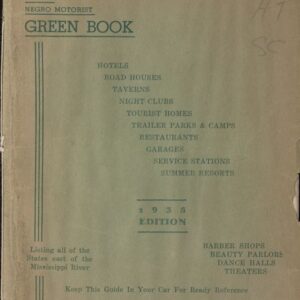
Navigating Connecticut Safely: The Green Book’s Role in African American Travel
In the mid-20th century, during the era of Jim Crow, the Green Book helped African American travelers find safe restaurants, hotels, gas stations, and other businesses while on the road.
Read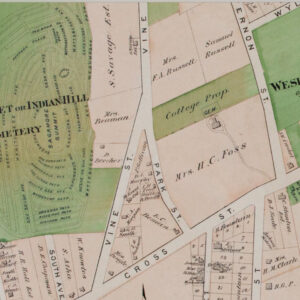
Middletown’s Beman Triangle: A Testament to Black Freedom and Resilience
One of the earliest and most politically active free Black neighborhoods in Connecticut emerged in Middletown in the late 1820s, the Beman Triangle.
Read
Hebron’s Josephine Sophia (White) Griffing and a Vision for Post-Emancipation America
From before emancipation and the 13th Amendment, Josephine Sophie White Griffing of Hebron, Connecticut, was an ardent advocate for enslaved and free people.
Read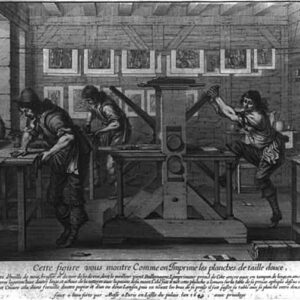
Thomas Short – Connecticut’s First Official Printer
Thomas Short became the Connecticut Colony’s first official printer in 1708, printing the laws and proclamations for the colonial legislature as well as the colony’s first book.
Read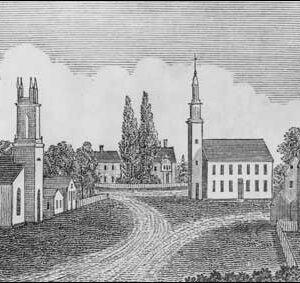
John Warner Barber’s Engravings Chronicle Connecticut History
John Warner Barber chronicled 19th-century Connecticut history through his historical writing and hundreds of engravings—many of which still exist today.
Read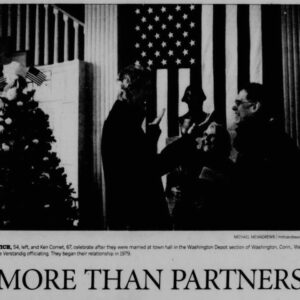
Connecticut Issues Same-Sex Marriage Licenses for the First Time – Today In History: November 12
On November 12, 2008, Connecticut issued its first marriage licenses for same-sex couples after Kerrigan et al. v. Commissioner of Public Health et al..
Read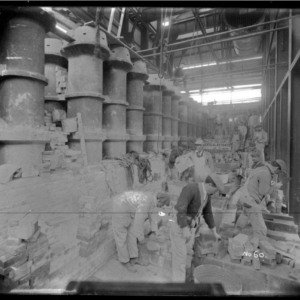
Early Connecticut Gas Light Companies
The first private gas light companies in Connecticut appeared just before 1850 in New Haven, Hartford, and Bridgeport.
Read
Banner Lodge: A Vacation Playground for an Excluded Population
From the 1930s to the 1970s, Banner Lodge was one of the most popular vacation destinations in Connecticut and actively welcomed a Jewish clientele.
Read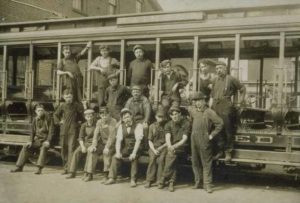
A Revolution in Horse Power: The Hartford & Wethersfield Horse Railroad Goes Electric
In 1888, Hartford commuters and city-goers zipped down Wethersfield Avenue in a horseless trolley car for the first time.
Read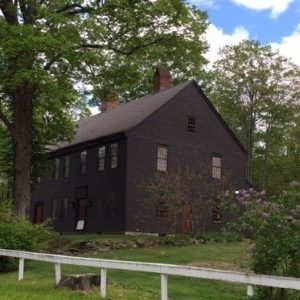
The Welcoming Warmth of Kent’s Seven Hearths
For over 272 years, Kent’s Seven Hearths has lived many lives—from trading post to school to artist’s home to historical society.
Read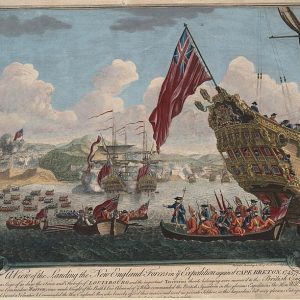
Connecticut’s French Connections
From Huguenots to French Canadian mill workers to modern immigration, Connecticut has always been a place shaped, in part, by a steady French influence.
Read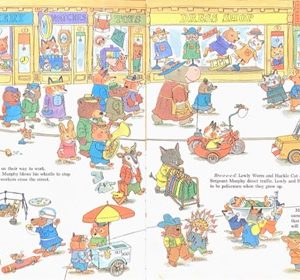
The Road to Busytown: Richard Scarry’s Life in Fairfield County
Inspired by Connecticut communities, Richard Scarry invented and illustrated some of the most beloved characters and communities in children’s literature.
Read
Food Needed to Win the War Comes from Washington
During World War I, the Town of Washington instituted a number of programs to increase food production and preservation to feed Allied armies and the European people,
Read
Sarah Boone: First Connecticut Black Woman to Receive Patent
In1892, Sarah Boone of New Haven became the first Black woman in Connecticut to be awarded a patent—for an improvement in the use of an ironing board.
Read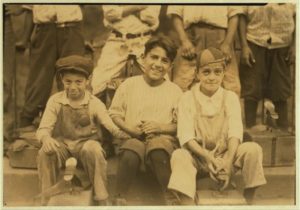
Boot Blacks and the Struggle to Survive in Hartford
In the late 19th and early 20th centuries, young boys who shined shoes (sometimes 70 hours per week) were the primary breadwinners for many struggling families.
Read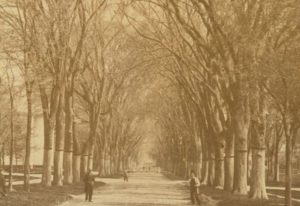
A Beautiful and Goodly Tree: The Rise and Fall of the American Elm
Almost every Connecticut town has an Elm Street, named for the popular trees that grew in abundance until a fungal infestation greatly diminished their numbers.
Read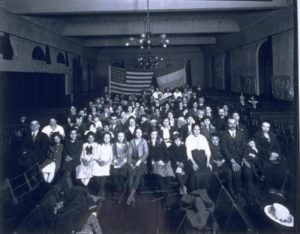
Building an Armenian Community in New Britain
Since the late 19th century, Armenian immigrants and descendants have created a community and shaped New Britain history.
Read
A Turn-of-the-Century New Year’s Eve
Hailed as the “Century Celebration,” the evening of December 31, 1900, saw revelry and reflection as individuals throughout the state welcomed the New Year.
Read
Early Church Bell Founders
Church bells served many important functions in early New England. Consequently, skilled bellfounders in Connecticut found themselves in high demand.
Read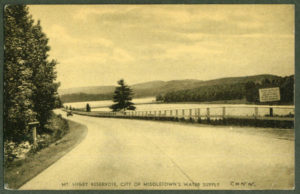
Middletown’s Reservoirs Drive Growth Throughout the 19th and 20th Centuries
The Laurel Brook and Mount Higby Reservoirs helped provide reliable sources of water that drove the growth of Middletown.
Read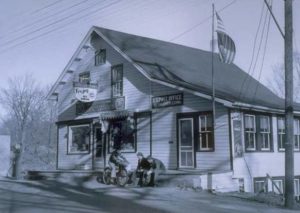
Connecticut’s Christmas Town
Nestled in a quiet section of Litchfield County lies the picturesque town of Bethlehem, known best for its designation as “Connecticut’s Christmas Town.”
Read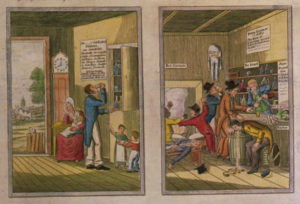
The Living Actually Haunted Many Connecticut Taverns – Who Knew?
Early Connecticut laws deemed anyone who spent excessive time in taverns as a “tavern haunter” and subjected them to fines and ridicule.
Read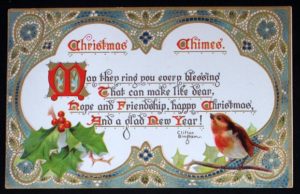
Sending Season’s Greetings: Christmas Cards in Connecticut
For nearly a decade, this little Connecticut town was renowned as the Christmas-card center of the world.
Read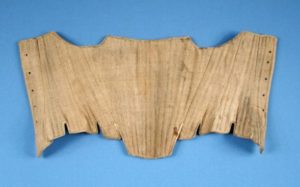
Little Nutmeggers: Four Centuries of Children’s Clothes and Games
Modes of dress and means of play for youngsters reflect more than changing tastes; they reveal shifts in societal attitudes toward the pre-adult years.
Read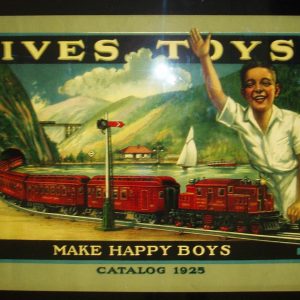
The Ives Manufacturing Company: Connecticut’s Foremost Toy Maker
The Ives Manufacturing Company—arguably Connecticut’s most famous toy company—became known for its variety of clockwork toys and trains.
Read
Waste Not, Want Not: The Colonial Era Midden
From tools, dishes, and clothing to muskrat bones, household trash from 1700s reveals how Yankees of the era lived.
Read
Goshen’s Animal Pound
Livestock were once a central feature and concern of daily life for Litchfield County residents.
Read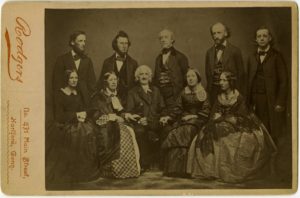
Scandal in the Beecher Family
An alleged affair between Elizabeth Tilton and Henry Ward Beecher became public in 1872 and inspired a series of lawsuits for libel.
Read
Connecticut Residents Did Not Let Veterans Day “Go Commercial.”
Despite passage of the federal Uniform Holiday Bill in 1968, Connecticut residents were largely reluctant to move Veterans Day observances from November 11.
Read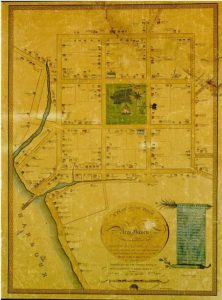
Why Was New Haven Divided into Nine Squares?
The layout of New Haven’s nine-square grid, though not the plan itself, is attributed to the original settlers’ surveyor, John Brockett.
Read
The Stamford Foundry Company Made Notable Stoves
When it ceased operations in the mid-1950s after over 120 years, The Stamford Foundry Company was the oldest known stove works in America.
Read
The Art of Burying the Dead: Exploring Connecticut’s Historic Cemeteries
From winged death’s heads to weeping willows, gravestone carvings in Connecticut’s historic cemeteries reflect changing attitudes toward mourning and memorialization.
Read
The Oldest Continuously Published Newspaper – Today in History: October 29
On October 29, 1764, New Haven printer Thomas Green established a weekly newspaper, the Connecticut Courant, in Hartford.
Read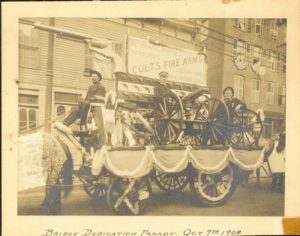
Hartford’s Industrial Day – Today in History: October 7
Hartford celebrated the 1908 opening of the Bulkeley Bridge, which connected Hartford and East Hartford, with a three-day extravaganza.
Read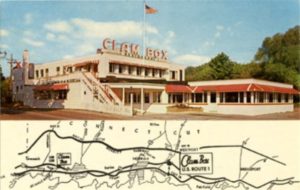
Lobsters and Oysters and Clams: A Short History of Seafood in Connecticut
The ocean’s bounty has been savored along the Connecticut coastline for as long as humans have been around to bring it on shore.
Read
Saddles Fit For a Shah
Since 1794, Hartford-based Smith-Worthington Saddlery has made tack for horses—along with the occasional ostrich harness and space suit prototype.
Read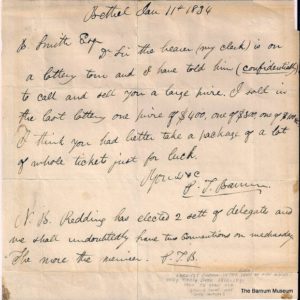
P. T. Barnum’s Lottery
Known for entertainment, this showman gained experience in engaging the public, and profiting from it, by running a lottery in Bethel.
Read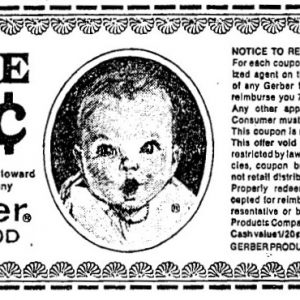
Birthplace of the Gerber Baby – Who Knew?
Westport’s artist Dorothy Hope Smith used her neighbor, Ann Turner, as inspiration for her iconic Gerber Baby trademark drawing.
Read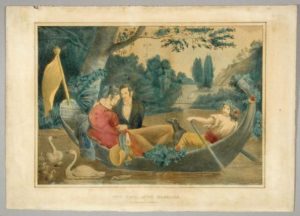
Grounds for Divorce – Who Knew?
While Connecticut was not the first to grant a divorce, it was the first to define the grounds for dissolution of a marriage in An Act Relating to Bills of Divorce.
Read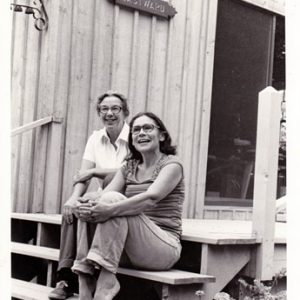
Rewriting the Norm: How Two East Haddam Women Revolutionized Nonsexist Language
East Haddam’s Casey Miller and Kate Swift were both outspoken advocates for eradicating gender bias in the English language.
Read
Connecticut’s First Mutual Savings Bank Opens in Hartford
On June 1, 1819, Governor Oliver Wolcott Jr. approved a legislative charter for the Society for Savings in Hartford—the first mutual savings bank in the state.
Read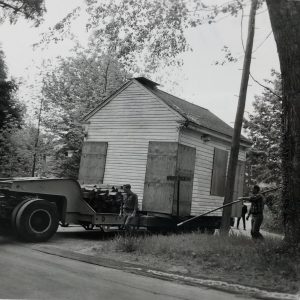
The Connecticut Houses that Ended Up in Massachusetts
Old Sturbridge Village moved numerous historical CT buildings, but evidence of their existence still lives on in historic maps, photographs, and memories.
Read
A Busy Airfield in Bethany
In its first few years, the airfield in Bethany served the interests of small-time aviation enthusiasts.
Read
Moses Wheeler: Legendary Housatonic Ferryman
Moses Wheeler carried passengers across the Housatonic River as the operator of the first ferry from Stratford to Milford—over 350 years ago.
Read
Talcott Mountain: A View of Early New England
The Talcott Mountain range lies in the northeastern section of Avon and is arguably the town’s most prominent geographic feature.
Read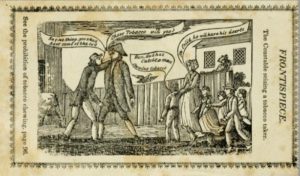
The Long, Ambiguous History of Connecticut’s Blue Laws
Connecticut’s blue laws are a series of laws based on puritan values that restrict or ban certain “morally questionable” activities on days of worship or rest.
Read
The Connecticut Town Green
Considered a quintessential feature of the New England landscape, town greens weren’t always the peaceful, park-like spaces we treasure today.
Read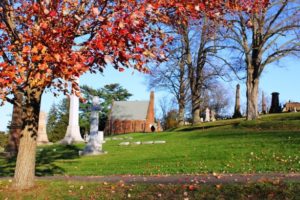
Indian Hill Cemetery and the Landscaping of Burial Grounds in the Mid-19th Century
The landscaping of Indian Hill Cemetery speaks to 19th-century reactions to industrialization and urbanization and the search for peaceful natural environments.
Read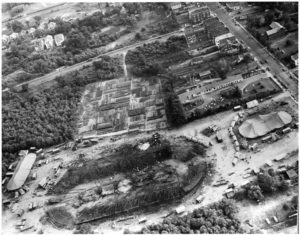
Hartford Circus Fire: “The Tent’s on Fire!” – Who Knew?
The Hartford Circus Fire on July 6, 1944, may be the worst human-caused disaster ever to have taken place in Connecticut.
Read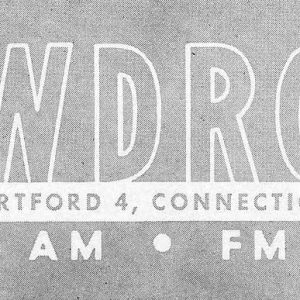
WDRC AM/FM – Connecticut’s Oldest Commercial Radio Station
WDRC is the oldest continuously operated commercial radio station in Connecticut that uses both AM and FM transmissions.
Read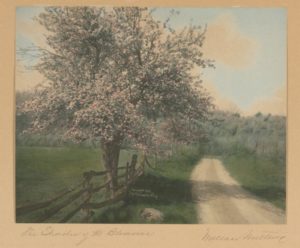
Past Perfect: Wallace Nutting Invents an Ideal Olde New England
In the early 1900s consumers bought photographs, furniture, and books from a former minister who sold the fantasy of simpler times as an antidote to modern life.
Read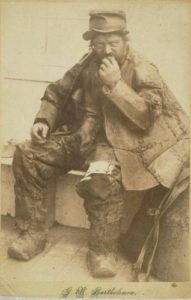
The Old Leatherman Alive in Our Memories
This enigmatic, solitary figure has captured the public imagination since the mid-1800s when he began walking a 365-mile interstate loop over and over again.
Read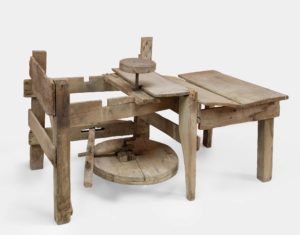
Hervey Brooks’s 19th-Century Pottery Barn
Hervey Brooks was an American potter and farmer who made red earthenware domestic products in Goshen for more than half a century.
Read
The “Fancy Chair” Craze of the 1800s: Lambert Hitchcock and the Story of the Hitchcock Chair
More than something to sit on, “fancy chairs” were emblems of social mobility for middle-class Americans.
Read
Louis’ Lunch and the Birth of the Hamburger
In 1900, in answer to a customer’s rush order for something “quick and delicious,” Louis Lassen of New Haven served up a meal that is credited as being the first hamburger.
Read
Jared Eliot Calls on Colonists to Change their Agricultural Practices
In 1760, this Killingworth minister and farmer published the first agricultural advice book in the British American colonies.
Read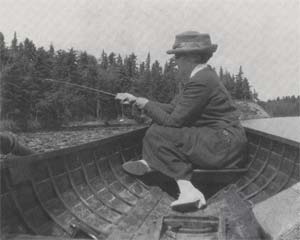
Edith Watson: Camera Artist
Over the five decades Edith Watson traveled around North America, her keen eye and box camera lens captured the otherwise untold stories of women.
Read
A History of Libraries Speaks Volumes About Southington
While it is not uncommon in the modern era for towns to appropriate funds for operating public libraries, the town of Southington has a unique history with its libraries.
Read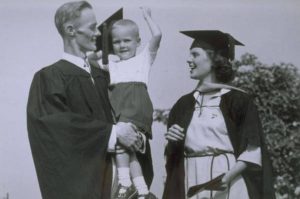
UConn and the Evolution of a Public University
From farming and war work to physics and sports, the University of Connecticut has diversified over the years and become New England’s leading public university.
Read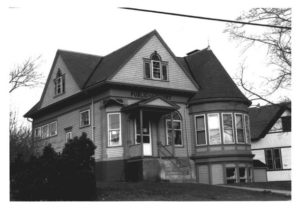
Aldrich Free Public Library: Dedicated to the Dissemination of Knowledge
Residents of the Moosup section of Plainfield organized a free public library “for the promotion and dissemination of useful knowledge” to its local citizenry.
Read
The Lebanon Grange Followed a Different Tune than National Movement
Music played a central role in fraternal rituals and sense of community.
Read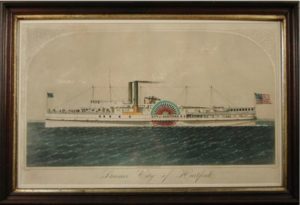
A Night to Remember: When the Steamboat Took on the Railroad—and Lost
A case of mistaken identity causes a vessel to crash into a bridge and results in new a rule for marking safe passage with red lights.
Read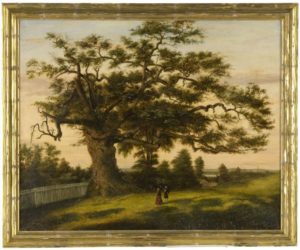
The Unsteady Meaning of “The Land of Steady Habits”
Connecticut’s description as “the land of steady habits” has been used to stand for a wide list of subjects, from beer drinking to sushi to hair bobbing.
Read
The Reader’s Feast: A Bookstore Ahead of Its Time
For over two decades, The Reader’s Feast was the most progressive independent bookstore in the Hartford area and provided a space for literature, community, food, and affirmation.
Read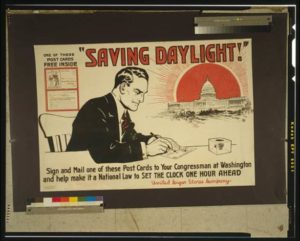
Playing with Time: The Introduction of Daylight Saving Time in Connecticut
Despite both formal and informal attempts to regulate the observance of Daylight Savings Time in Connecticut, it still remains a controversial topic for many state residents.
Read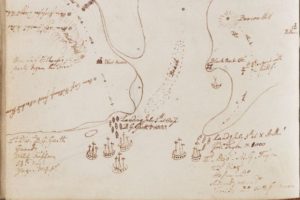
Ezra Stiles Captured 18th-Century Life on Paper
Among Ezra Stiles’ greatest contributions to history are the journals and records he kept detailing daily life in 18th-century New England.
Read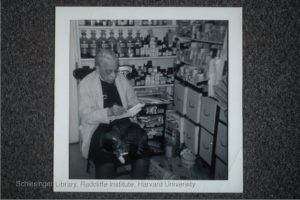
Miss James, First Woman Pharmacist in CT Right in Old Saybrook
Remembering Anna Louise James, the first woman pharmacist in the state of Connecticut.
Read
A Feeling of Solidarity: Labor Unions and Suffragists Team Up
The voting booth and the shop floor were two important arenas in the fight for women’s equality.
Read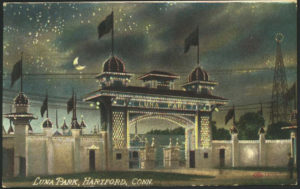
Luna Park: A 20th-century Story of Amusement and Morality
The story of Luna Park in West Hartford provides insight into the battles between entertainment and ethics in Connecticut during the Progressive Era.
Read
History in a Heart
A set of old Valentine’s Day cards, kept safe in a cloth-covered scrapbook, provide a look back at the sometimes humorous art of expressing heartfelt sentiments.
Read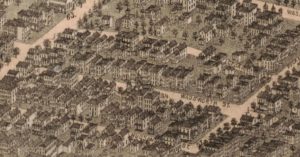
The Lives of Addie Brown and Rebecca Primus Told Through their Loving Letters
Addie Brown and Rebecca Primus were two free Black women whose lives intersected in Hartford, Connecticut in the 19th century. Letters written between them imply their relationship was more than friendship.
Read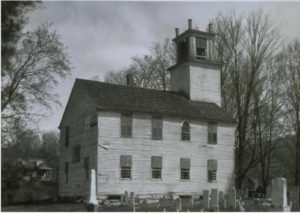
A Valley Flooded to Slake the Capital Region’s Thirst
From 1927 to 1948, the Metropolitan District Commission built the Saville Dam and flooded the valley to create the Barkhamsted Reservoir, displacing over a thousand people.
Read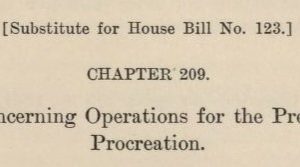
LGBTQ+ Mental Health Treatment in the 20th Century
The simultaneous development of accepted mental health practices and LGBTQ+ visibility over the decades offers a chance to examine how psychological research contributed to the discrimination of LGBTQ+ individuals and communities.
Read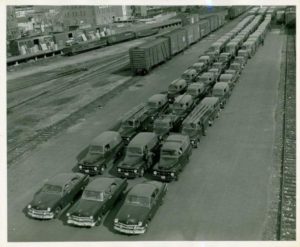
G. Fox and the Golden Age of Department Stores
Founded by Gerson Fox in 1848, G. Fox & Co. went on to become the nation’s largest privately owned department store.
Read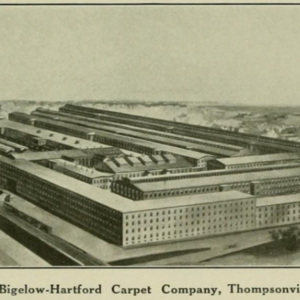
First Connecticut Carpet Mills Emerge in Simsbury and Enfield
In the 1820s, the first two notable carpetmakers emerged in the north central part of Connecticut—the Tariff Manufacturing Company and the Thompsonville Carpet Manufacturing Company.
Read
From Kiln to Collection: Norwich Pottery and Its Makers
Despite the lack of good local clay, Norwich potteries flourished, turning out jugs, jars, crocks, pie plates, dishes, and other utilitarian objects.
Read
New Britain’s Yankee Peddlers Boost 18th-century Economy
While the rural economy of the North in the 18th century focused on local exchanges of goods within a community, Yankee peddlers used their mobility to bring finished products directly to the consumer.
Read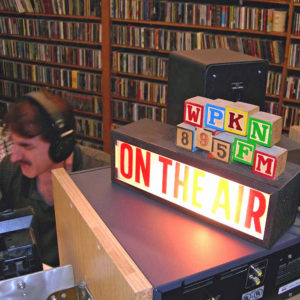
Bridgeport’s WPKN: Going Strong After Half a Century
Bridgeport’s community radio station, WPKN, is still going strong after half a century, offering unique and eclectic programming.
Read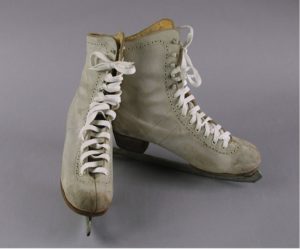
Skating Through Winter
By the 1850s, better-designed skates and interest in healthful outdoor activities made ice skating an increasingly popular leisure activity.
Read
Phillips’ Milk of Magnesia Originated in Stamford
In 1873, Charles H. Phillips patented Milk of Magnesia and his company produced the popular antacid and laxative in Stamford, Connecticut, until 1976.
Read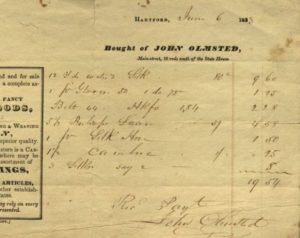
An Inconvenient Season: Charlotte Cowles’s Letters from December 1839
Letters between a sister in Farmington and a brother in Hartford reveal details about daily life at a time when the distance between the two communities wasn’t so easily traveled.
Read
Beechmont Dairy: Bridgeport’s Ice Cream to Die For
Joseph Niedermeier Sr. founded the Beechmont Dairy in Bridgeport in 1906—a popular local business for over 60 years.
Read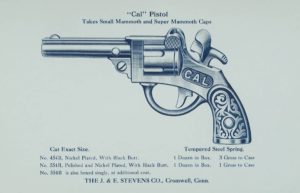
Cromwell’s Iron Men Made Toys for Boys and Girls
The J & E Stevens Company eventually became the largest manufacturer of cast-iron toys in the country.
Read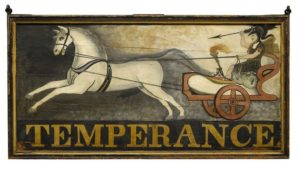
The Slow Demise of Prohibition in Wilton
It is only in recent decades that the people of Wilton moved forward, albeit divisively, with plans to allow the sale of alcohol in their town.
Read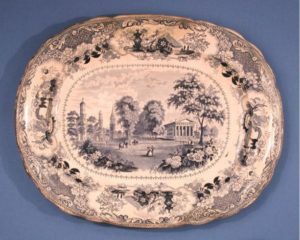
Setting the Table in Historic Style: Connecticut Views on Staffordshire China
Engravings of Hartford, Daniel Wadsworth’s estate, the New Haven Green, and other sites around the state adorned British chinaware made for the US market.
Read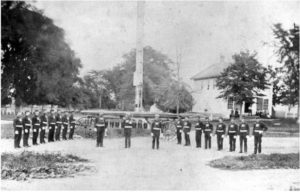
Connecticut’s Oldest Fire Department
The Wethersfield Volunteer Fire Department is the oldest continually operated fire department in Connecticut.
Read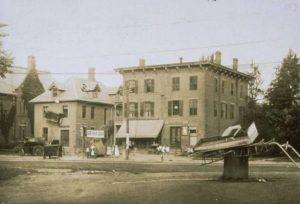
Past Hallowe’en Pranks Bemused Some and Frustrated Others
Jack o’ lanterns, witches, and ghosts—many of the holiday staples that we still associate with Halloween were familiar to Connecticut residents in the early 1900s.
Read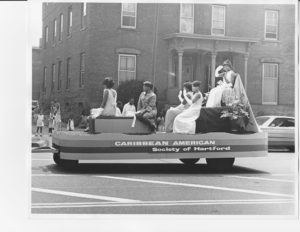
West Indians in Hartford
A significant wave of immigration to the United States from the West Indies began in the 1940s, spurred by labor shortages during World War II.
Read
The Great Danbury State Fair & Early 20th-Century Outdoor Advertising
In 1909, the Danbury Agricultural Society called attention to its upcoming fair in a most creative manner.
Read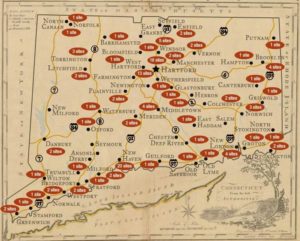
Site Lines: Connecticut’s Freedom Trail
Sites along the Connecticut Freedom Trail mark key events in the quest to achieve freedom and social equality for African Americans in the state.
Read
From Aprons to Lab Coats: The Art and Science of Home Economics
In 1893 the Storrs Agricultural College (the precursor to the University of Connecticut) began training women in domestic science, the discipline that would later be called home economics.
Read
A Pie Tin’s Soaring Sales
Tins used to hold pies at William Frisbie’s pie company in Bridgeport in the late 1800s reportedly provided the inspiration for Wham-O’s most popular toy, the Frisbee.
Read
Connecticut Draws the Curtain on Public Executions
Brooklyn’s status as county seat in 1831 resulted in the town hosting what is widely accepted as the last public hanging in Connecticut.
Read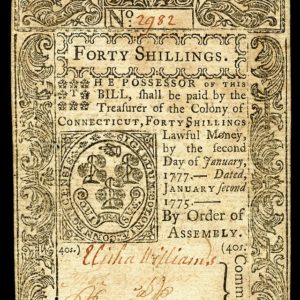
Connecticut’s Early Commercial Banks
After observing the financial success of commercial banks in Boston and New York City, wealthy elites in Connecticut pressured the Connecticut General Assembly to grant charters for privately owned commercial banks in Hartford, New Haven, and New London in 1792.
Read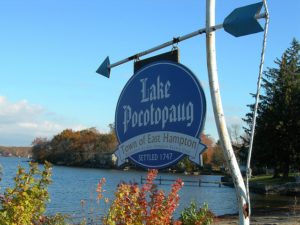
Lake Pocotopaug Shapes the Growth of East Hampton
East Hampton is home to one of Connecticut’s largest inland bodies of water, Lake Pocotopaug.
Read
Death and Mourning in the Civil War Era
The Civil War transformed traditional practices of death and mourning in Victorian-era Connecticut.
Read
The White Mountain Express Derails in Greenwich
On July 16, 1908, the gong of the ambulances on Greenwich Avenue broadcast one of the worst accidents on the New York, New Haven and Hartford Railroad.
Read
Brass City/Grass Roots: Waterbury Farming in the Late 1800s
This article is part of the digital exhibit “Brass City/Grass Roots: The Persistence of Farming in Waterbury, Connecticut”
Read
Brass City/Grass Roots: Farming as Recycling: The Becces in the North End
This article is part of the digital exhibit “Brass City/Grass Roots: The Persistence of Farming in Waterbury, Connecticut”
Read
Brass City/Grass Roots: From Farmers to Developers: The Rasmussens of Town Plot
This article is part of the digital exhibit “Brass City/Grass Roots: The Persistence of Farming in Waterbury, Connecticut”
Read
Brass City/Grass Roots: The Pierponts of East Farms
This article is part of the digital exhibit “Brass City/Grass Roots: The Persistence of Farming in Waterbury, Connecticut”
Read
Brass City/Grass Roots: Struggles and Decline
This article is part of the digital exhibit “Brass City/Grass Roots: The Persistence of Farming in Waterbury, Connecticut”
Read
Brass City/Grass Roots: Food Marketing and Processing as Part of Civic Culture
This article is part of the digital exhibit “Brass City/Grass Roots: The Persistence of Farming in Waterbury, Connecticut”
Read
Brass City/Grass Roots: What Makes a Farm a Farm? Other Sites of Food Production in Waterbury
This article is part of the digital exhibit “Brass City/Grass Roots: The Persistence of Farming in Waterbury, Connecticut”
Read
Brass City/Grass Roots: Remnants and Revivals
This article is part of the digital exhibit “Brass City/Grass Roots: The Persistence of Farming in Waterbury, Connecticut”
Read
Brass City/Grass Roots: Bucks Hill: Waterbury’s Rural Holdout
This article is part of the digital exhibit “Brass City/Grass Roots: The Persistence of Farming in Waterbury, Connecticut”
Read
Pepperidge Farm Opens Bakery – Today in History: July 4
On July 4, 1947, Margaret Rudkin of Fairfield opened a modern commercial bakery in Norwalk and gave it the name of her small bakery, Pepperidge Farm.
Read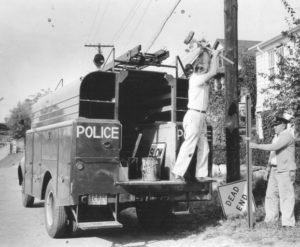
Greenwich Emergency Responders: On the Move Overtime
Horses, motorcycles, and boats are just a few of the modes of transportation that town emergency personnel have used over the years to get to where they’re needed.
Read
Memorial Day 1920 Brings a Changing of the Guard
In 1920, veterans groups played an active role in orchestrating Memorial Day observances in towns across Connecticut.
Read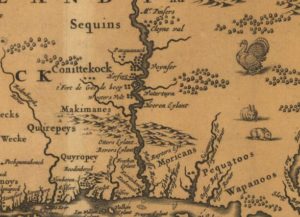
Timeline: Settlement of the Colony of Connecticut
A timeline displaying the major events leading to Connecticut statehood, including its settlement by the Dutch, the origins of Hartford, Wethersfield, and Windsor, the founding of the Connecticut, New Haven, and Saybrook colonies, and Connecticut’s acquisition of a formal charter from England.
Read
Built on Innovation, Saved by Nostalgia: Hitchcock Chair Company
In the 1820s Lambert Hitchcock adapted mass production concepts pioneered in the clock-making field to chair manufacture.
Read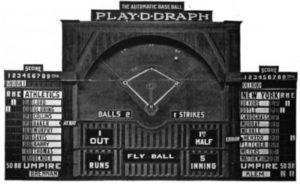
Re-creating Our National Pastime
The Baseball Playograph Company in Stamford brought live baseball to tens of thousands of Americans through the production of its “playograph” product.
Read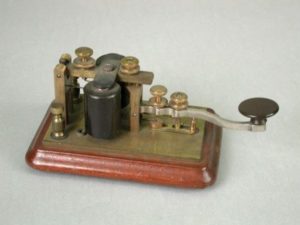
Learning about the Lusitania: How Hartford Heard the News
Citizens turned to outdoor bulletin boards, city bus drivers, and other lines of communication to get the latest news on the fate of the ship’s passengers.
Read
Child Labor in Connecticut
While Connecticut proved to be one of the more progressive states when it came to child labor laws, it still took federal legislation to protect children in the workplace.
Read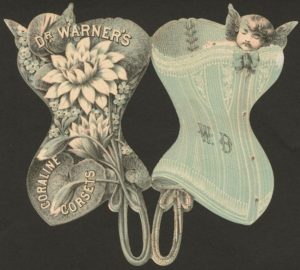
From Bombs to Bras: World War I Conservation Measures Transform the Lives of Women
A shortage of metal during World War I encouraged women’s clothing manufacturers (such as Bridgeport’s Warner Brothers Corset Company) to switch from producing corsets to brassieres.
Read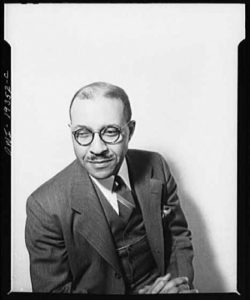
Hartford’s Great Migration through Charles S. Johnson’s Eyes
During the Great Migration of the early 1900s, African Americans from the rural South relocated to Hartford and other Northern cities in search of better prospects.
Read
Site Lines: Fortresses of Faith, Agents of Change
Black churches, including the earliest ones in Connecticut, have long been at the forefront in the battle for social progress and equality.
Read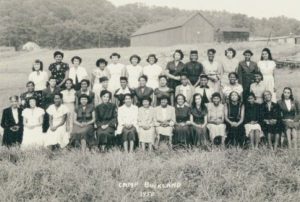
Laboring in the Shade
Thousands of Black Southern students, including a young Martin Luther King Jr., came north to work in Connecticut’s tobacco fields.
Read
Trouble in the Connecticut Suburbs: Revolutionary Road
In Richard Yates’s 1961 book Revolutionary Road, living in the Connecticut suburbs is held up as the ultimate badge of success.
Read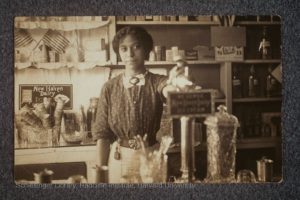
Anna Louise James Makes History with Medicine
Anna Louise James operated a drugstore in Hartford until 1911, making her the first female African American pharmacist in the state.
Read
The Joshua Hempsted Diary: A Window into Colonial Connecticut
This accomplished New London resident chronicled his daily life over a 47-year period from 1711 to 1758.
Read
The Great Remedy: Picturing the Emancipation Proclamation
On January 1, 1863, the Emancipation Proclamation went into effect, declaring more than three million African Americans in those states in rebellion against the United States to be forever free.
Read
O Christmas Tree!
On December 25, 1890, The Hartford Courant reported that Christmas Eve had seen crowded stores and train delays of up to an hour due to heavy travel.
Read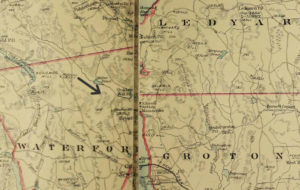
The Rogerenes Leave Their Mark on Connecticut Society
A refusal to compromise became the governing principle of this religious group active in the New London area for some 200 years.
Read
Mr. & Mrs. Rockwell’s Park
In 1914, bell and ball bearing manufacturer Albert Rockwell donated 80 acres of land to the city of Bristol for the creation of a public park.
Read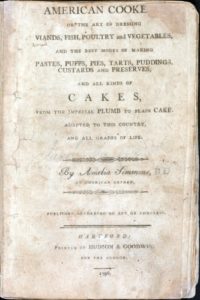
Amelia Simmons Adds a Uniquely American Flavor to Cooking
In 1796, Amelia Simmons authored American Cookery—believed to be the first cookbook authored by an American published in the United States.
Read
The Aqua Velva State – Today in History: November 17
On November 17, 1917, the J.B. Williams Company of Glastonbury filed a trademark with the US Patent and Trademark Office for the Word Mark “Aqua Velva.”
Read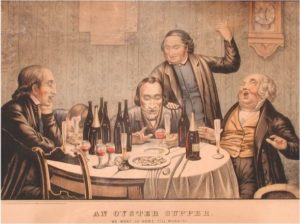
Any Month with an “R” in It: Eating Oysters in Connecticut
Lack of refrigeration and higher bacteria counts in tidal waters once made summer months a dangerous time to eat oysters.
Read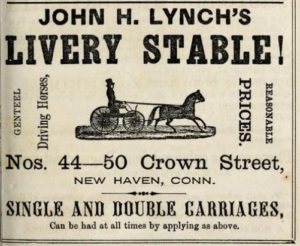
New Haven: What Was Everyday Life Like During the Civil War?
A great primary resource for digging into a community’s everyday life is a city directory.
Read
Hartford’s “Little Italy”
In the early 1900s, Italians made new lives for themselves in Hartford.
Read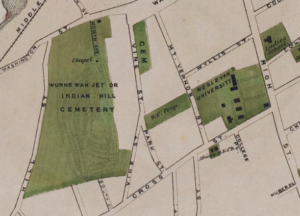
Indian Hill Cemetery and the Vernacular of the Times
Indian Hill Cemetery’s founders promoted their property as a place to find peace, both with the natural environment and with the area’s indigenous past.
Read
The 42-Day Income Tax
In 1971, to eliminate the state’s budget deficit, Connecticut legislators approved a tax on income. Just forty-two days later, they repealed it, instead voting to increase the state’s sales tax.
Read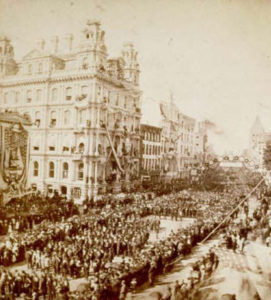
A Day of Celebration – Today in History: September 17
September 17, 1879 was a day of celebration in the City of Hartford when more than 100,000 people came to the city to celebrate Battle Flag Day.
Read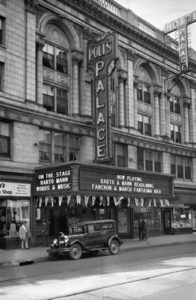
Sylvester Poli, Negotiating Cultural Politics in an Age of Immigration
This Italian-born businessman and New England theater magnate also helped the working poor in New Haven’s immigrant communities at the turn of the 20th century.
Read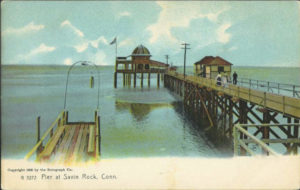
Savin Rock Park: “Connecticut’s Coney Island”
Savin Rock Park was a seaside resort constructed in the late 19th century in the modern-day town of West Haven.
Read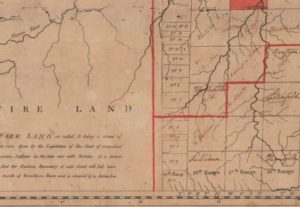
New Connecticut on Lake Erie: Connecticut’s Western Reserve
If you drive through the area of Ohio still called the Western Reserve today, you will find towns named Norwich, Saybrook, New London, Litchfield, Mansfield, and Plymouth.
Read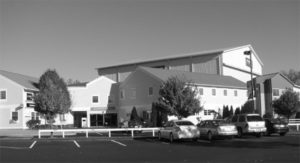
The Story of the Oakdale Makes Great Theater
The legendary Oakdale Theater in Wallingford reflects over 60 years of evolution in American pop culture.
Read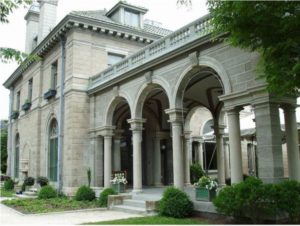
Harkness Memorial Park Offers a Glimpse into Early 20th Century Wealth
With gorgeous views of Long Island Sound, Harkness Memorial Park is a beautifully landscaped recreation area along the shoreline in Waterford, Connecticut.
Read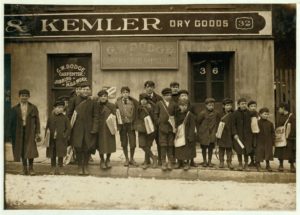
The Newsies Strike Back
Despite organizing in 1909 to fight pay cuts, ultimately, vending machines and changing business models brought an end to the era of the Hartford newsie.
Read
The Connecticut River
The Connecticut River received a designation as an American Heritage River, and it remains protected as just one of 14 rivers in the country to be recognized as such.
Read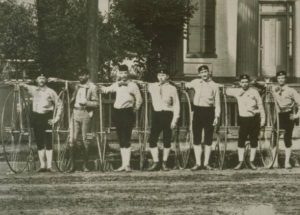
The Hartford Wheel Club: Disparity in the Gilded Age
Despite the wealth found in some sections of the city, the economic volatility of the Gilded Age produced hard times for residents of Hartford.
Read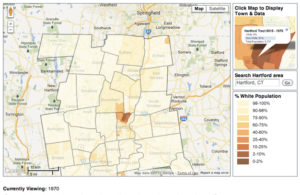
How Real Estate Practices Influenced the Hartford Region’s Demographic Makeup
Persistent segregation is the historic legacy of steering and blockbusting, two discriminatory tactics that played a role in shaping suburban neighborhoods.
Read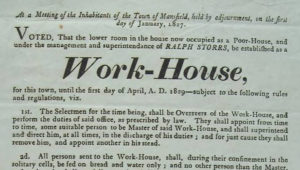
Connecticut Poor Law Aimed to Care for the Needy
Connecticut instituted a Poor Law in the 17th century to comply with a directive from the British government that the colony ensure for the care of the poor within its borders
Read
North Stonington Fairs Preserve Connecticut’s Agricultural Heritage
Despite brief success as a mill town in the early 19th century, North Stonington is ultimately tied to its agricultural history.
Read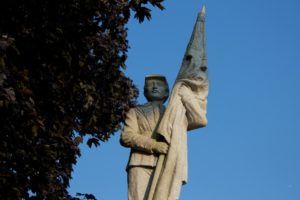
A Special Place to Honor Military Veterans in Plainville
On the corner of Maple and Whiting Streets in Plainville, Connecticut, is a special place where the town honors its war veterans.
Read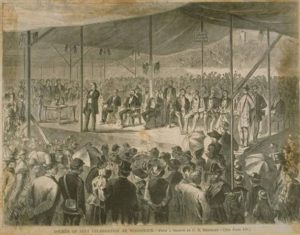
President Grant Celebrates Independence Day in Woodstock – Today in History: July 4
On July 4, 1870, President Ulysses S. Grant attended Independence Day celebrations at Roseland Cottage in Woodstock.
Read
Wesleyan Hills Helps Redefine Suburbia
The design of the Wesleyan Hills community in Middletown, Connecticut, stands in stark contrast to the uninspiring, cookie-cutter suburbs of the Post-World War II era.
Read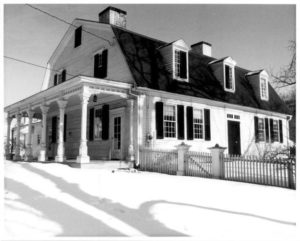
The Darlings Make Preservation a Family Affair
Thomas Darling was an 18th-century merchant, farmer, and politician and a member of the colonial elite.
Read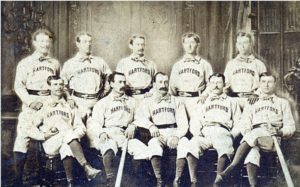
Diamonds of the Past: Hartford’s Lost Ball Parks
Erected in 1874, Hartford’s earliest baseball stadium was the Base Ball Grounds in Colt Park, on the corner of Wyllys Street and Hendricxsen Avenue.
Read
George Washington Slept Here (Just Perhaps Not Well)
After his stay at the Perkins Tavern in Ashford, George Washington commented in his personal journal on the accommodations.
Read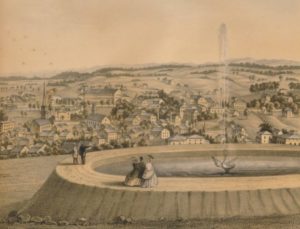
A Bird’s-eye View of New Britain
By depicting Walnut Hill Park and Reservoir, which was a new addition to the city at the time, this 19th-century print documented the growing public parks movement of the era.
Read
The Decorative Arts of Connecticut
Decorative Arts—or, household furnishings— reveal past lifestyles and showcase the state’s best-known craftspeople.
Read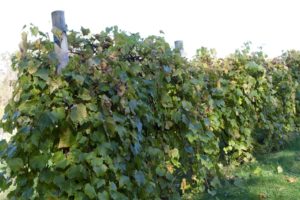
Raise a Glass to Winemaking in Connecticut
The Colony’s first settlers produced wine and spirits, but it would not be until the 1970s that Connecticut could grow and sell its harvest.
Read
Hidden Nearby: The Bantam Lake Ice House
Bantam Lake served a vital function as a supplier of ice that local residents used to preserve food when temperatures began to rise.
Read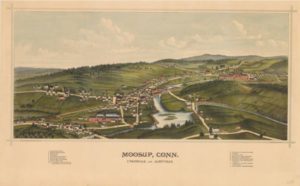
A Bird’s-eye View of Moosup
This depiction of a Quinebaug Valley town and its satellite communities—Uniondale and Almyville—records an idealized view of the 19th-century textile boom.
Read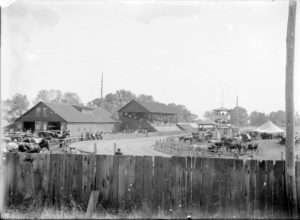
A Fair to Remember in Brooklyn
Sponsored by the Windham County Agricultural Society, the Brooklyn Fair is held annually in August to promote and preserve the area’s agricultural heritage.
Read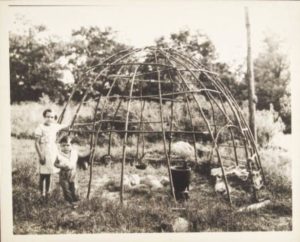
Living Rituals: Mohegan Wigwam Festival
The Wigwam festival is a modern version of the ancient Mohegan Thanksgiving for the Corn Harvest, or Green Corn Festival.
Read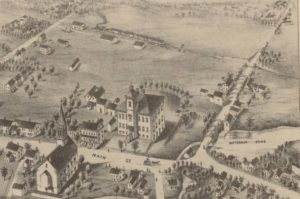
A Bird’s-eye View of Broad Brook
This rendering of the village of Broad Brook depicts a classic New England mill town but takes creative liberties to emphasize the community’s assets.
Read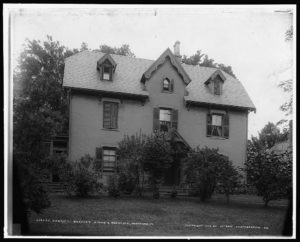
Hartford’s Nook Farm
This small enclave in the capital city’s west end became home to many of the 19th century’s most celebrated and creative personalities.
Read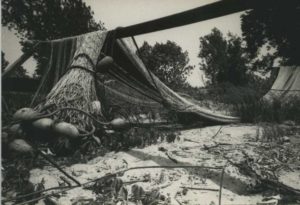
A Tale of Shad, the State Fish
The aquatic inhabitant, shad, has a long history of influencing foodways, income, and culture in the region.
Read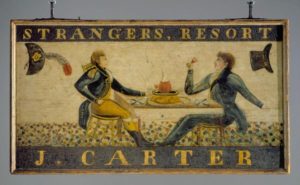
Tavern Signs Mark Changes in Travel, Innkeeping, and Artistic Practice
In colonial times, tavern signs beckoned weary travelers to places of rest and entertainment, but by the early 1900s collectors prized them as folk art and relics of a bygone era.
Read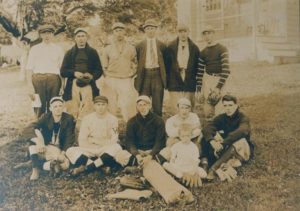
Semi-Pro Baseball in Sharon – Who Knew?
From the 1930s until about the early 1970s, Sharon fielded a team in the semi-pro Interstate Baseball League (IBL).
Read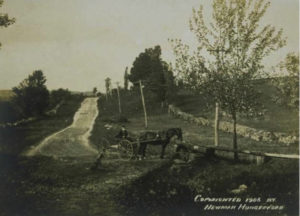
Hidden Nearby: Harwinton’s Catlin Trough
This memorial to a town father reminds us of the integral role that horses and other animals once played in daily life.
Read
Park Street Festival, Hartford 1978
The Park Street Festival is an annual Puerto Rican celebration held in the heart of Hartford’s Puerto Rican community on Park Street.
Read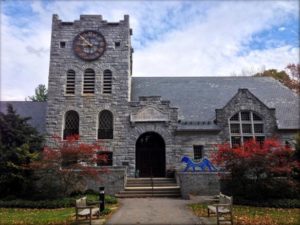
The Scoville Memorial Library
The first publicly funded library in the US continues to serve the town of Salisbury.
Read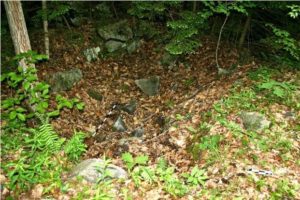
“Outcasts” Build Their Own Village in 18th-Century Barkhamsted
In a wooded area of Barkhamsted near Ragged Mountain lie the remains of a once thriving multicultural community.
Read
Bird’s-eye Views of Connecticut Offer Idealized Portraits of Progress
Panoramic prints of growing cities and towns became popular in the late 1800s as Connecticut transformed from an agricultural to an industrial state.
Read
Warren Congregational Church, a Longstanding Community Center
An examination of the Warren Congregational Church not only tells us about the central role churches played in developing communities during this period in New England’s history.
Read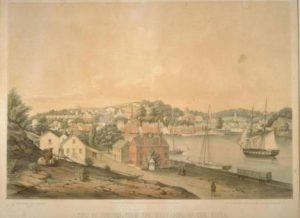
Norwich in Perspective
Two different artistic takes on a prosperous 19th-century mill town and commercial center.
Read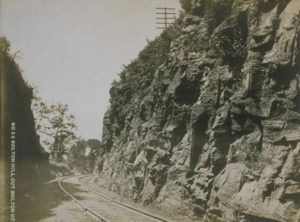
Rock-Solid Industry in 19th-Century Bolton
Driving along Route 44 in Bolton, motorists travel through a narrow passageway of rocks, caves, and woods known as the Bolton Notch.
Read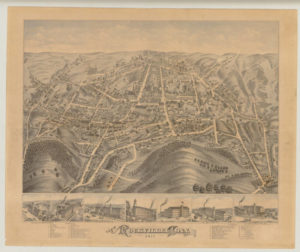
Bird’s-eye Views of Rockville Chart Textile Industry’s Growth
Two depictions, produced 18 years apart, illustrate how the textile boom transformed this borough of Vernon.
Read
A Sign of the Times Blends Masonic and Patriotic Imagery
The sign from a tavern operated by Luther Holcomb, a Granby mason, reflects his fraternal affiliation as well as the establishment’s role as a meeting site.
Read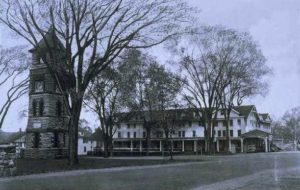
The Rise of the “Second Home” Community in Sharon – Who Knew?
Sharon attracted a substantial vacation community and between 1880 and 1920, wealthy visitors refurbished older homes or built Colonial Revival-style mansions.
Read
Bird’s-eye Views of Winsted
As bird’s-eye view maps declined in popularity during the early 20th century, artists incorporated technical advances in hopes of reversing the trend.
Read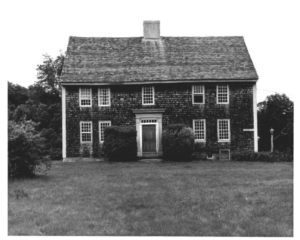
North Stonington’s Randall House, Nothing Ordinary about It
Fascinated by the colonial lifestyle and open-hearth cooking, Bill and Cindy purchased the John Randall House in North Stonington in 1986.
Read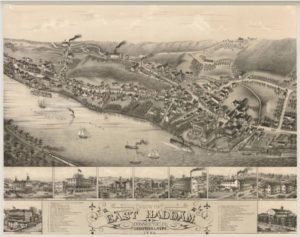
A Bird’s-eye View of East Haddam
In 1880, East Haddam was already a popular tourist destination and, despite its small size, boasted two steamboat landings to accommodate visitors.
Read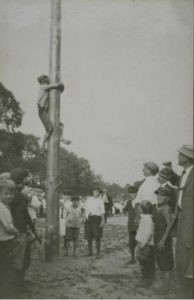
Labor Day at the Turn of the 20th Century
In February of 1889, the Connecticut General Assembly passed a bill making the first Monday of each September a legal holiday.
Read
Joshua Hempsted Born – Today in History: September 1
On September 1, 1678, Joshua Hempsted was born in New London, Connecticut.
Read
Preserving an All-American Downtown in Torrington
Torrington’s unique and historically significant buildings are the foundation on which local businesses and civic leaders built a revitalized economy.
Read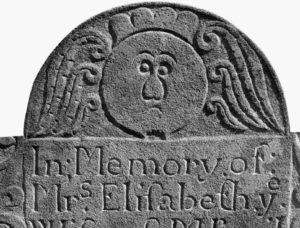
The Art of Life and Death in Colonial Bolton
Bartlett was the first gravestone carver in the upper Connecticut River Valley, and his headstones tell historians much about early life in the northeastern colonies.
Read
Branford Gets On the Trolley
Starting as a means of intra-city transportation, trolley lines extended outward by the start of the 20th century and promoted the growth of modern suburbs.
ReadMore Articles




